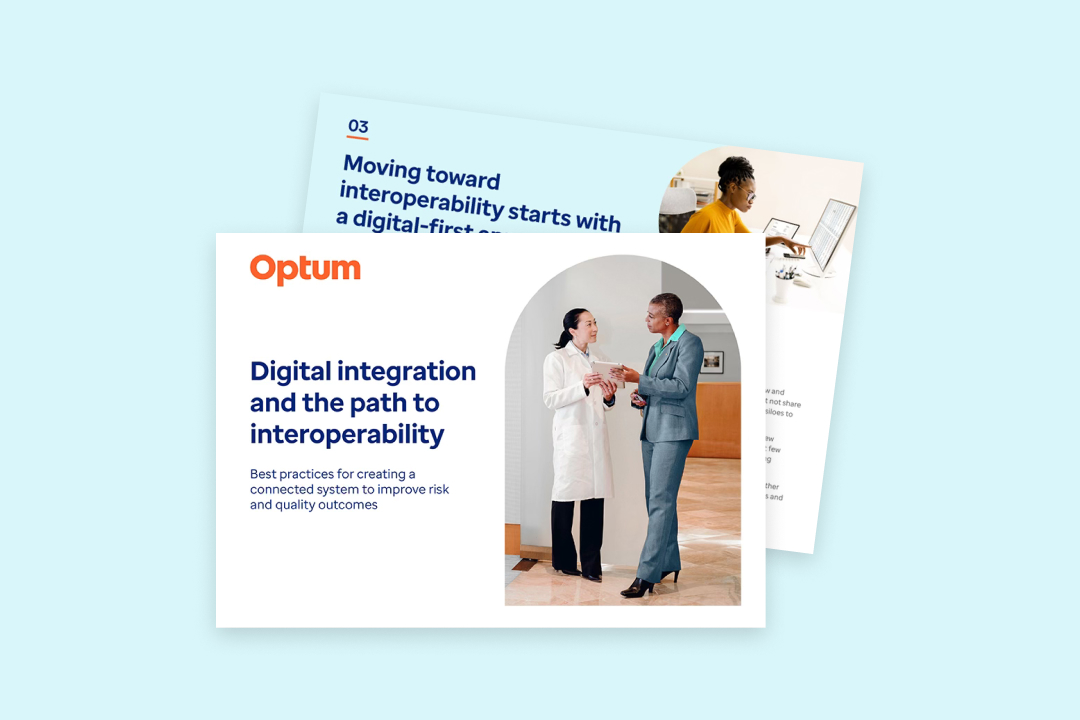Optimizing risk adjustment services as healthcare evolves
The healthcare industry is continually evolving, shaped by regulatory changes, accurate reimbursement and technological advancements. Regulatory updates, such as modifications to the risk adjustment model and Star Ratings, are a primary driver of this evolution. These changes often emphasize the importance of point-of-care follow-ups and comprehensive care, which aligns perfectly with the Optum strategy of integrating solutions directly into the provider workflow.
Technological advancements, particularly in interoperability, are another significant driver. Electronic Medical Records (EMRs) are increasingly offering more opportunities for integration, and other aggregators are emerging to help close gaps in care. However, the lack of uniformity across different EMR platforms remains a challenge, limiting full interoperability.
At Optum, we leverage technology, especially AI and EMR integrations, to help enhance healthcare risk adjustment accuracy. One of our key strategies is immediate and accurate data capture during prospective and concurrent reviews. This approach is gaining traction because it supports more timely and precise data collection at the point of care. By addressing gaps in care during patient encounters, we help improve patient outcomes, increase provider engagement and reduce the need for retrospective chart reviews.
Despite the growing emphasis on point-of-care adjustments, retrospective adjustments remain essential. The complexity of healthcare data systems and the fragmented EMR market mean that retrospective adjustments will continue to be necessary for at least the next decade. Our retrospective services help capture any missing gaps, contributing to comprehensive risk adjustment.
We are leading this transformation by leveraging our scale, innovation and strong partnerships to optimize risk adjustment services for both providers and payers.
Scale: Our well-established ability to connect with over 30,000 providers through our services enhances efficiency and allows us to deploy AI technologies on a broader scale.
Innovation: We are agile and can quickly pilot new products, a critical capability in the fast-paced health tech industry. We collaborate closely with payers and providers to refine our solutions to help meet the specific needs of our clients.
Strong partnerships: Our relationships with providers and payers are built on trust and proven success. Our track record with traditional programs has earned us the confidence of our customers, who are willing to engage in additional programs due to the value they have seen from previous collaborations.
While innovation is vital, it must be balanced with regulatory compliance. Our medical coders are well-trained and experienced in regulatory requirements. This balance is crucial for maintaining the trust of providers and payers. We are committed to staying aligned with regulatory requirements while pushing the boundaries of what is possible.
The healthcare industry is moving towards a more integrated approach between providers and payers, driven by regulatory changes, financial pressures and technological advancements. Our success is rooted in our scale, innovation and strong partnerships, all while maintaining a strong focus on regulatory alignment.
As we continue to innovate and evolve, we are dedicated to helping our clients achieve their goals and deliver the highest quality outcomes.




